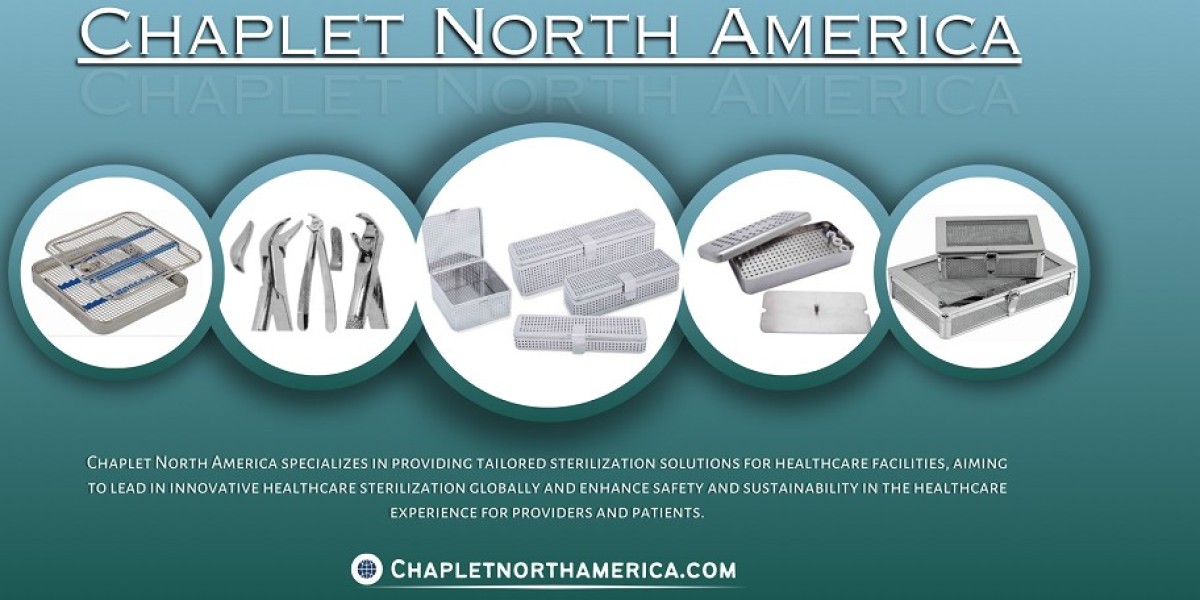Introduction
In the realm of healthcare, patient safety stands as a paramount concern. Central to this concern is the meticulous handling and sterilization of surgical instruments. Chaplet North America, a leader in medical equipment, offers comprehensive guidance to ensure optimal patient safety throughout the surgical process. This article delves into Chaplet's expert strategies, highlighting key principles and practices for effective surgical instrument management and sterilization.
Understanding the Importance of Proper Instrument Handling
Before delving into the specifics of sterilization, it's crucial to recognize the significance of proper instrument handling. From the moment instruments are used in a surgical procedure to their eventual sterilization, every step must adhere to stringent protocols. Chaplet emphasizes the importance of maintaining instrument integrity and cleanliness throughout this process to minimize the risk of contamination and infection.
Guidelines for Surgical Instrument Handling
Chaplet North America provides clear guidelines for the handling of surgical instruments, beginning with proper preoperative preparation. This includes inspecting instruments for damage or defects, ensuring they are functioning optimally, and organizing them according to procedural requirements. During surgery, meticulous attention to detail is essential to prevent cross-contamination and maintain a sterile field.
Key Steps in Instrument Sterilization
Sterilization is a critical aspect of surgical instrument management, aimed at eliminating pathogens and ensuring patient safety. Chaplet outlines a systematic approach to instrument sterilization, encompassing several key steps:
- Cleaning: The first step in sterilization is thorough cleaning of instruments to remove organic debris and contaminants. Chaplet recommends using enzymatic cleaners and mechanical methods to achieve optimal cleanliness.
- Decontamination: Following cleaning, instruments undergo a process of decontamination to further eliminate microbial pathogens. This may involve chemical disinfection or thermal methods, depending on the nature of the instruments and the level of contamination.
- Packaging: Once cleaned and decontaminated, instruments are carefully packaged to maintain sterility until they are needed for surgery. Chaplet offers a range of packaging solutions designed to preserve instrument integrity and facilitate easy access during procedures.
- Sterilization: The final step in the process is sterilization, which effectively kills any remaining microorganisms on the instruments. Chaplet provides guidance on selecting the appropriate sterilization method, whether it be steam, ethylene oxide, or low-temperature sterilization, based on instrument compatibility and effectiveness.
Quality Assurance and Monitoring
In addition to outlining proper sterilization procedures, Chaplet emphasizes the importance of quality assurance and monitoring to ensure the efficacy of sterilization efforts. Regular testing of sterilization equipment, monitoring of sterilization cycles, and ongoing staff training are essential components of a comprehensive quality assurance program.
Adherence to Regulatory Standards
Chaplet North America guidelines for surgical instrument handling and sterilization align with industry regulations and standards, including those set forth by organizations such as the FDA and CDC. By adhering to these standards, healthcare facilities can ensure compliance and promote the highest levels of patient safety.
Conclusion
In conclusion, Chaplet North America offers invaluable guidance for optimizing patient safety through effective surgical instrument handling and sterilization. By following Chaplet's expert recommendations and adhering to rigorous protocols, healthcare professionals can minimize the risk of infection and promote positive surgical outcomes. Through a commitment to excellence in instrument management and sterilization, Chaplet and healthcare providers alike uphold the highest standards of patient care and safety.



